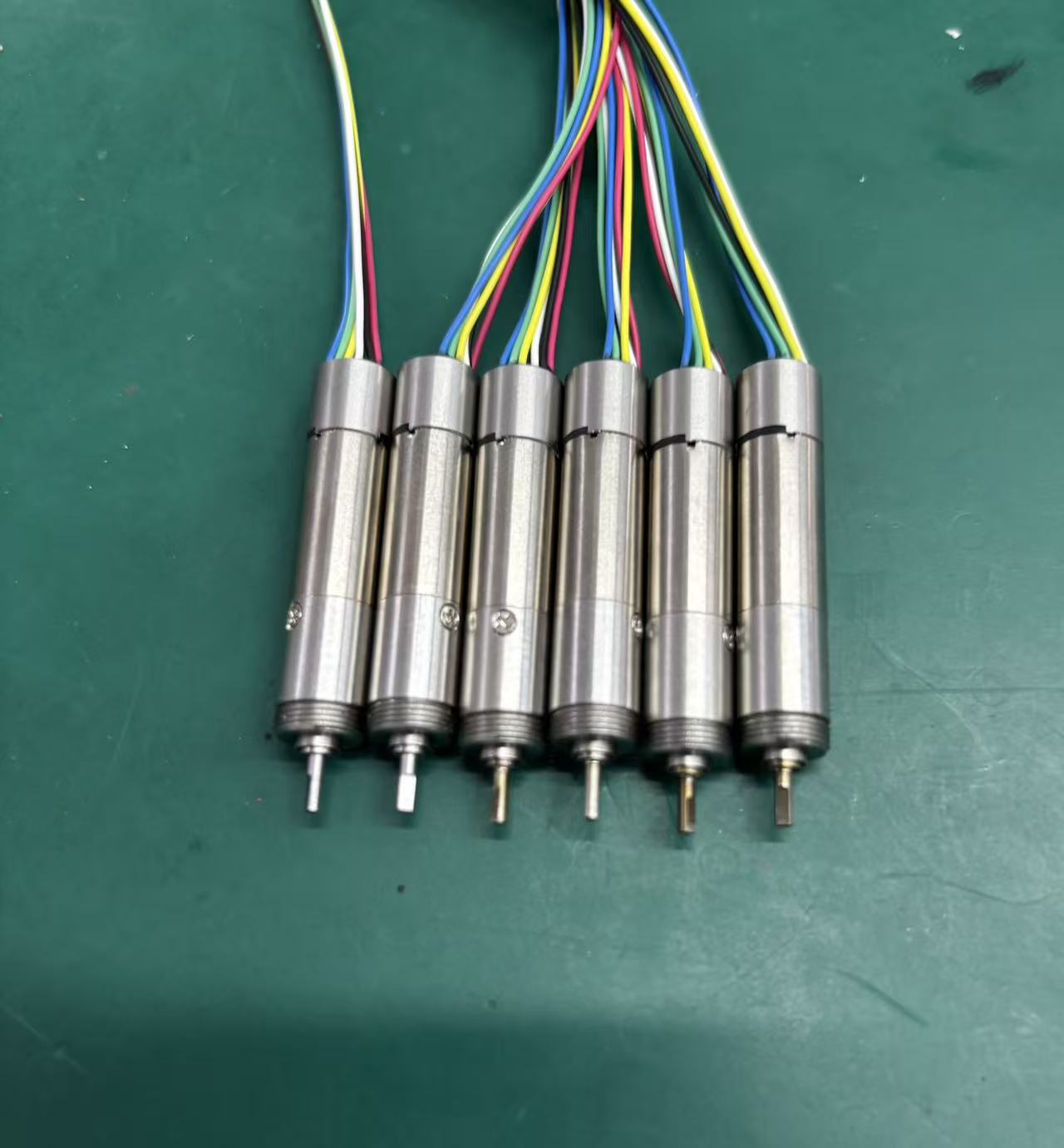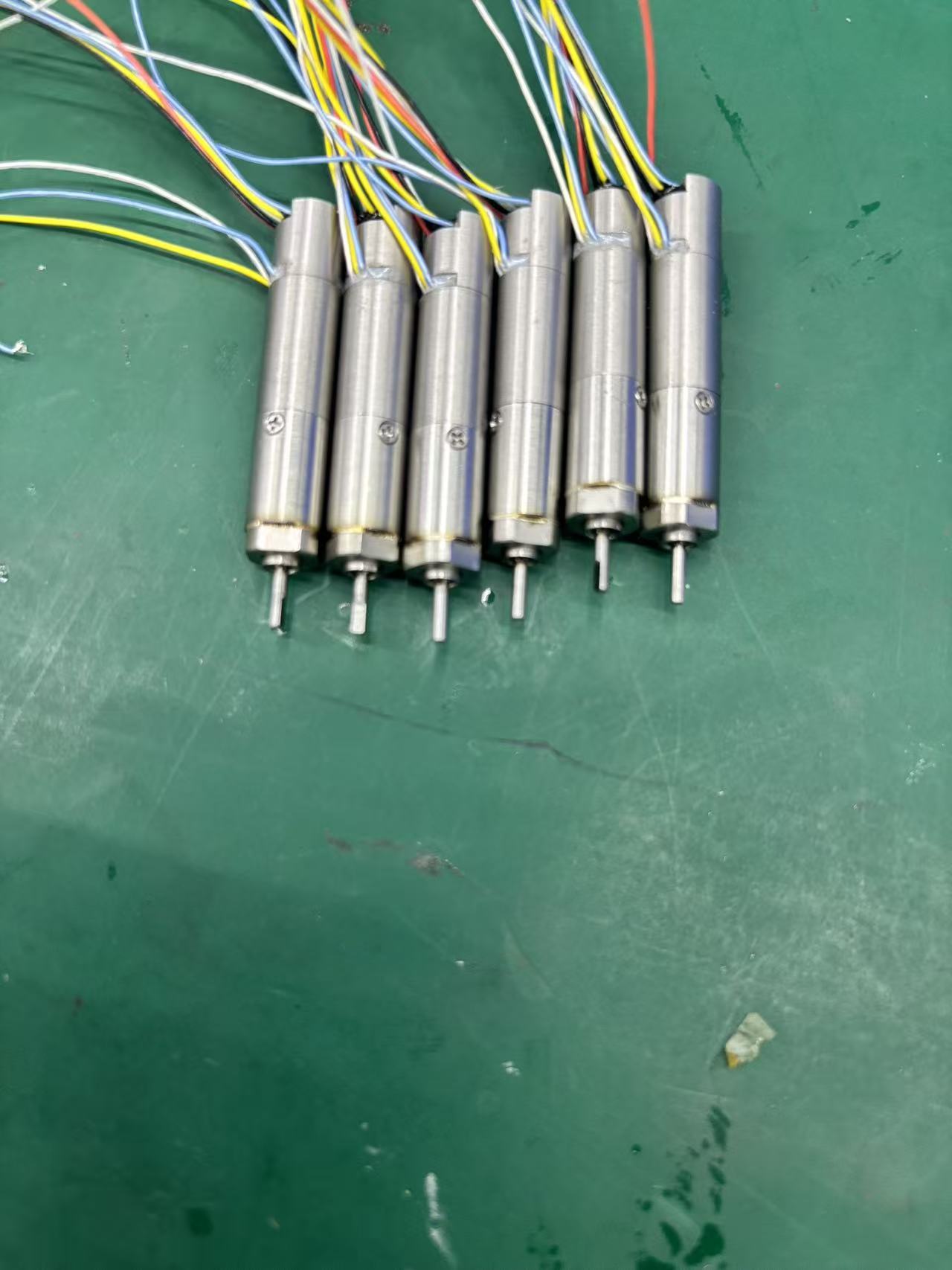The brand-new 8mm coreless gear motor provides a high-efficiency, high-torque, and cost-effective transmission solution for precision micro-devices, dexterous hands, and omnidirectional robots.
In the field of micro-drives, the 8mm coreless servo geared motor, with its compact size, high efficiency, and precise control capabilities, has become a core power source for precision systems such as robots, medical equipment, and drones. This article will delve into its structure, working principle, core advantages, and typical application scenarios.
I. Structural Analysis: The Combination of Miniaturization and High Efficiency
Coreless Rotor: The rotor adopts a coreless design (copper wire wound into a cup shape), eliminating the hysteresis loss of traditional iron cores, resulting in extremely low inertia and millisecond-level response speed.
High Power Density: With an outer diameter of only 8mm, it can output several watts to tens of watts of power, with an efficiency of over 85%, far exceeding that of ordinary micro brushed motors.

Planetary Gearbox
Miniature Planetary Gearbox: Employs high-precision planetary gears (reduction ratios from 3:1 to 2000:1), achieving torque multiplication in a compact structure, with output torque reaching 0.1-0.3 N·m.
Low Backlash Design: Some models reduce backlash error through harmonic reduction or special tooth profile optimization, suitable for precision positioning applications.
Servo Control System
Closed-Loop Feedback: Integrated encoder or Hall sensor monitors speed/position in real time, dynamically adjusting input current, achieving positioning accuracy of ±0.1°.
Integrated Drive Circuit: Some models incorporate a miniature drive board (such as the FOC algorithm), supporting PWM, CAN, or RS485 communication, simplifying system integration.
II. Core Advantages: Why Choose an 8mm Hollow Cup Servo Gear Motor?
Extreme Lightweight Design
The entire unit can weigh less than 10g, making it particularly suitable for weight-sensitive applications such as drone gimbals and miniature robot joints.

III. Typical Application Scenarios
Medical Field
Surgical Robots: Drive endoscope joints, achieving 0.1mm-level precision movement.
Insulin Pumps: Control the opening and closing of micro-flow valves to ensure accurate drug delivery.
Smart Hardware
Bionic Robots: Drive finger joints, simulating human grasping motion (torque 0.5 N·m, repeatability ±0.2°).
Drone Gimbals: Equipped with a gyroscope for three-axis image stabilization, vibration amplitude <0.01mm at a motor speed of 3000 rpm.
Industrial Automation
Miniature Conveyor Belts: High-speed sorting of lightweight parts (such as electronic components), with a cycle speed of up to 200 times/minute.
Optical Focusing Systems: Precisely adjust lens focal length, with a step accuracy of 1μm.
IV. Key Selection Parameters
Torque and Speed: Calculate peak torque based on the load (with a 20% margin required). For example, a robotic arm joint driving a 5g load requires ≥0.2 N·m.
Reduction Ratio Selection: High reduction ratios (e.g., 100:1) are suitable for high-torque, low-speed scenarios, while lower ratios prioritize speed.
Control Interface: Requires compatibility with a host computer protocol (e.g., PWM duty cycle control or CAN bus commands).
Environmental Adaptability: Waterproof (IP54) or high-temperature resistant (-20℃~+85℃) versions are available.
V. Future Trends
Material Innovation: Graphene windings or 3D-printed ceramic gears further reduce weight and improve durability.
Intelligent Integration: Built-in AI chips enable adaptive control (e.g., automatic torque compensation).
Modular Design: Plug-and-play modules integrate motor + gearbox + drive + sensor, shortening development cycles.
Conclusion
The 8mm coreless servo geared motor is redefining the boundaries of micro-drive technology. With the integration of precision manufacturing and intelligent control technologies, its applications will extend from industrial equipment to wearable devices, microsatellites, and other cutting-edge fields, continuously driving the technological wave of "miniaturization and intelligence."



